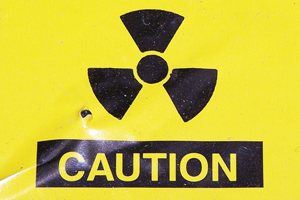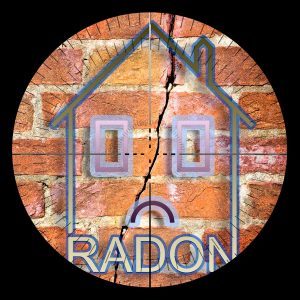While the health risk from radon direct exposure below the Canadian standard is small there is no level that is here risk totally free. It is the option of each property owner to decide what degree of radon direct exposure they are willing to accept. The chart listed below compares therisk of passing away of radon-induced lung cancer to other much better known threats such as car mishaps, carbon monoxide gas as well as residence fires. The danger of lung cancer cells from radon gas exposure is preventable yet significant. The only way to understand your radon degree is to evaluate as well as if high levels are found do something about it to lower.
How much does it cost to fix radon in house?
The cost of a mitigation system may vary according to the home's design, size, foundation, construction materials and the local climate. Radon reduction systems average costs nationally are $1,200 with a range from $800 to $1500 common depending on house and market conditions.
High levels of radon in residences typically originate from the surrounding soil. Radon gas from the dirt enters buildings through splits and openings. The EPA has identified Putnam County as a "high risk" radon zone. Nevertheless, the only way to know if you have high radon degrees in your house is to evaluate it.
Radon normally does absent a wellness risk outdoors due to the fact that it is diluted in the open air. Radon can, however, develop to harmful degrees inside a house. One out of every 15 homes is approximated to have high radon levels. Radon is the 2nd leading reason for lung cancer cells (after smoking cigarettes) in the USA, creating greater than 20,000 lung cancer cells deaths yearly.
What kind of cancer is caused by radon?
Radon decays quickly, giving off tiny radioactive particles. When inhaled, these radioactive particles can damage the cells that line the lung. Long-term exposure to radon can lead to lung cancer, the only cancer proven to be associated with inhaling radon.
The risks to your wellness from radon
Radon decrease can be performed in high-risk homes by meticulously intended sealing of recognized resources, ventilation, and fans for high radon cellars. Radon doesn't cause itchy eyes or sprinkling noses, yet it does damage your lungs in time. Lasting direct exposure throughout years, also if radon levels increase as well as drop gradually, significantly raises your possibilities of establishing lung cancer cells. Since you're spending hrs at once in your house inhaling the air, you're mosting likely to take in lots of radon as you cook, bathe, and also rest if it's present in the home's air supply. Kids that are home all day long are at much more risk for inhalation.
Also in low threat locations it can accumulate and become deadly.Radon gas, the quiet killer, is a leading source of cancer cells. Radon is a radioactive gas that forms from the natural breakdown of uranium, which is typically found in trace amounts in water, dirt, and rock. The Epa (EPA) has actually figured out that exposure to radon gas is second just to cigarette smoking as a leading cause of lung cancer cells in the USA. In fact, up to 21,000 lung cancer deaths annually have been credited to the exposure to high levels of radon. Smokers that are subjected to radon go to an even higher risk of establishing lung cancer cells.
Why is radon bad for you?
Radon produces a radioactive dust in the air we breathe. The dust is trapped in our airways and emits radiation that damages the inside of our lungs. This damage, like the damage caused by smoking, increases our risk of lung cancer.
Where is radon found in the home?
Radon is a radioactive gas that has been found in homes all over the United States. It comes from the natural breakdown of uranium in soil, rock, and water and gets into the air you breathe. Radon typically moves up through the ground to the air above and into your home through cracks and other holes in the foundation.
How much does radon cost per gram?
Radon is available at a cost of about $4/mCi.
- The Canadian standard for radon in indoor air for residences is 200 Becquerels per cubic metre (200 Bq/m3).
- Over the years, information that tracks radon degrees indicates that a large percentage of Pennsylvania homes have a serious radon problem.
- Radon gas threatens, as well as if the issue goes without treatment, the radon focus remains to climb inside your house.
- Radon gas enters your home or various other home from the outdoors, and also gradually, gradually builds up to dangerous levels that can result in an enhanced threat of lung cancer or breathing concerns.
What is radon poisening radon in the home?
Radon is a radioactive gas that has been found in homes all over the United States. It comes from the natural breakdown of uranium in soil, rock, and water and gets into the air you breathe. Radon typically moves up through the ground to the air above and into your home through cracks and other holes in the foundation.
What causes radon?
Being exposed to radon for a long period of time can lead to lung cancer. Radon gas in the air breaks down into tiny radioactive elements (radon progeny) that can lodge in the lining of the lungs, where they can give off radiation. This radiation can damage lung cells and eventually lead to lung cancer.
Is it hard to sell a house with radon?
Fortunately, it's not hard to sell a house with radon, provided that you alert potential buyers and mitigate the problem, say Brian Thomas, a top real estate agent in the http://www.erienewsnow.com/story/42117911/what-are-the-symptoms-of-radon-poisoning Denver, Colorado area, with 16 years of experience. “For as much fear and uncertainty as radon causes, there's an easy fix.”
How do I make my house safe from radon?
Install a layer of gas-permeable aggregate, such as four inches of gravel, beneath the slab or flooring system of your home if you don't have a crawlspace. Cover this layer or your crawlspace floor with plastic sheeting to stop radon gas from moving past that level and into your home.
How effective is radon remediation?
The Surgeon General and the EPA recommend testing for radon and reducing radon in homes that have high levels. Fix your home if your radon level is confirmed to be 4 picocuries per liter (pCi/L) or higher. Radon reduction systems work. Some radon reduction systems can reduce radon levels in your home by up to 99%.
How do you eliminate radon?
If a person has been exposed to radon, 75 percent of the radon progeny in lungs will become "harmless" lead particles after 44 years. When an alpha particle damages a cell to make it cancerous, the onset of lung cancer takes a minimum of 5 years but most often 15 to 25 years, and even longer.
Does home insurance cover radon mitigation?


homeowners insurance and radon remediation While home insurance is designed to financially protect you from sudden and unexpected perils such as fire or theft, it typically won't cover things that can be considered related to home maintenance like radon testing and mitigation.
How common is radon in a home?
It's common: About 1 in every 15 homes has what's considered an elevated radon level. The gas is odorless and invisible, says the EPA, and it causes no immediate symptoms, so the only way to know if your home is affected is by testing your individual residence.
Is radon something to worry about?
The average home has about 1.3 pCi/L of radon. Such levels aren't enough to worry about, but under the right conditions, they could make you sick. According to the EPA, a nonsmoker who was exposed to average levels of radon for a lifetime would have a 1 in 500 risk of developing lung cancer.
Is radon heavier than air?
Radon gas is approximately 7.5 times heavier than air. It is however a noble gas with no chemical affinity but is easily influenced by air movements and pressure. In a house with forced air heating and cooling, radon gas can easily be distributed throughout the entire dwelling.
Does Radon make you tired?
The more uranium there is, the more radon there is. That makes radon the second leading cause of lung cancer after smoking. But even minor symptoms like headaches, feeling unusually tired, itching or burning eyes, irritated skin, nasal congestion, a dry throat or nausea could be due to your home's indoor air quality.
Is a radon level of 5 bad?
Safe radon levels. The best radon level measurement would be zero. The average global outdoor radon level varies between 5-15 Bq/m3, equal to 0.135-0.405 pCi/L. For every 99.9 Bq/m3, or every 2.7 pCI/L increase in long term radon exposure, lung cancer risk rises 16 percent.
Can I install my own radon mitigation system?
In most cases, pros charge about $1,500 to install a radon mitigation system, but you can do it yourself for only about $500 in materials. So if you're fairly handy and have some carpentry, plumbing and electrical skills, you can install your own system in a weekend and save yourself a thousand bucks!